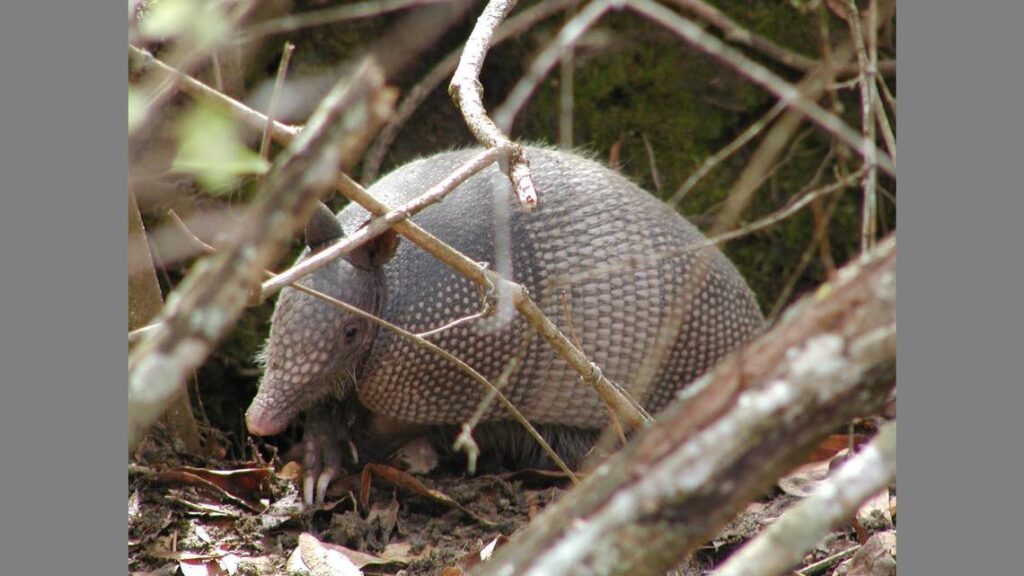Armadillos are back digging up SC Lowcountry yards.
Here’s how to keep them out.

In recent years, armadillos have quietly dug their way into the sandy soils of the South Carolina Lowcountry.
These curious, armored mammals, once found primarily in Texas and parts of the Southwest, have steadily expanded their range, now reaching into Georgia, Florida and well into coastal areas like Beaufort County.
“We get anywhere between 8 to 10 calls a week for armadillos now,” said Cliff Boatwright of Tracks Animal Control in Beaufort.
While some may find their prehistoric looks charming, armadillos can be more than just odd backyard visitors.
From digging up gardens to posing some health risks, or just being a bit of a backyard nuisance, here’s what Lowcountry residents need to know about these hard-shelled creatures.
Where do armadillos live?
Armadillos prefer shady, wooded areas with soft soil, especially near creeks or rivers, according to the South Carolina Department of Natural Resources.
Their range is often limited by temperature; they prefer weather between 40 to 80 degrees Fahrenheit. They don’t do well in extreme hot or cold, meaning these critters are spotted most often at dawn or dusk.
Armadillos can typically be found rooting around flower beds, lawns or golf courses in search of insects like ants, termites and even frogs.
Why are they a problem?
Armadillos are not considered threats to crops or livestock, but they are notorious for:
- Digging deep burrows under homes, driveways, patios and pool decks, potentially compromising foundations.
- Uprooting plants and damaging flower beds while foraging.
- Destroying turf with their rooting, which can be confused with raccoon damage.
- Attracting other pests.
One of the most common reasons people see armadillos or other similar critters in their yards is when residents feed outdoor pets, like cats, Boatwright said.
“When you leave that food out for outdoor pets, it also invites these other critters to visit your yard, too,” Boatwright said.
If you’re feeding outdoor pets, consider bringing food inside at night to avoid attracting armadillos and other critters.
Are armadillos dangerous?
Although armadillos are not aggressive and rarely bite, they can pose health risks.
According to SCDNR, armadillos can carry the bacteria responsible for leprosy (Hansen’s disease). They may also carry the parasite Trypanosoma cruzi, which causes Chagas disease.
Even though the risk of transmission is low, you should avoid touching armadillos or handling their blood and fluids.
If you’re scratched or bitten or come into contact with a dead armadillo, always consult a healthcare provider.
How to keep armadillos out of your yard
If you’re dealing with armadillo damage or want to prevent it, here are five recommended steps from Critter Control:
- Install a fence: Armadillos aren’t good climbers or jumpers, so a short but sturdy fence buried at least a foot underground can be effective.
- Make your yard inhospitable: Spread mulch or wood chips around gardens and flower beds. These textures discourage digging.
- Eliminate their food source: Armadillos dig for insects. Treat your lawn with insecticides to reduce their reason for visiting.
- Use scent deterrents: Sprinkle cayenne pepper or other spicy powders in areas they frequent. Armadillos dislike strong, spicy smells.
- Set humane traps: Place live traps at burrow entrances or along their paths. Be cautious: In South Carolina, it is illegal to relocate a trapped armadillo. According to SCDNR, they must be dispatched on-site by you or a licensed professional.
So while these hard-shelled backyard creatures are fun to look at, make sure to observe from a distance and seek professional help if you need it.
For more information or help with wildlife concerns in South Carolina, visit the SCDNR webpage or a local licensed wildlife control professional.
